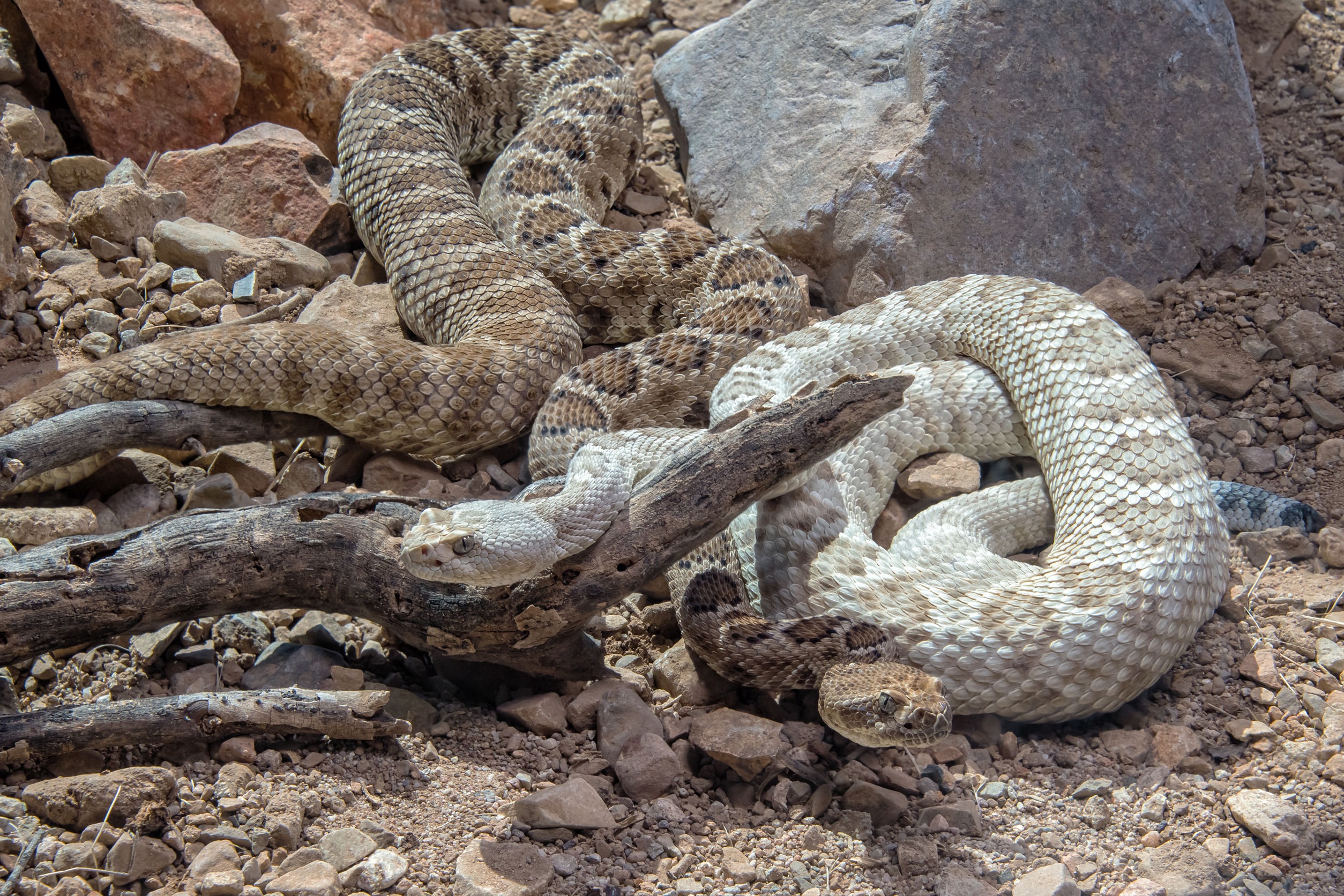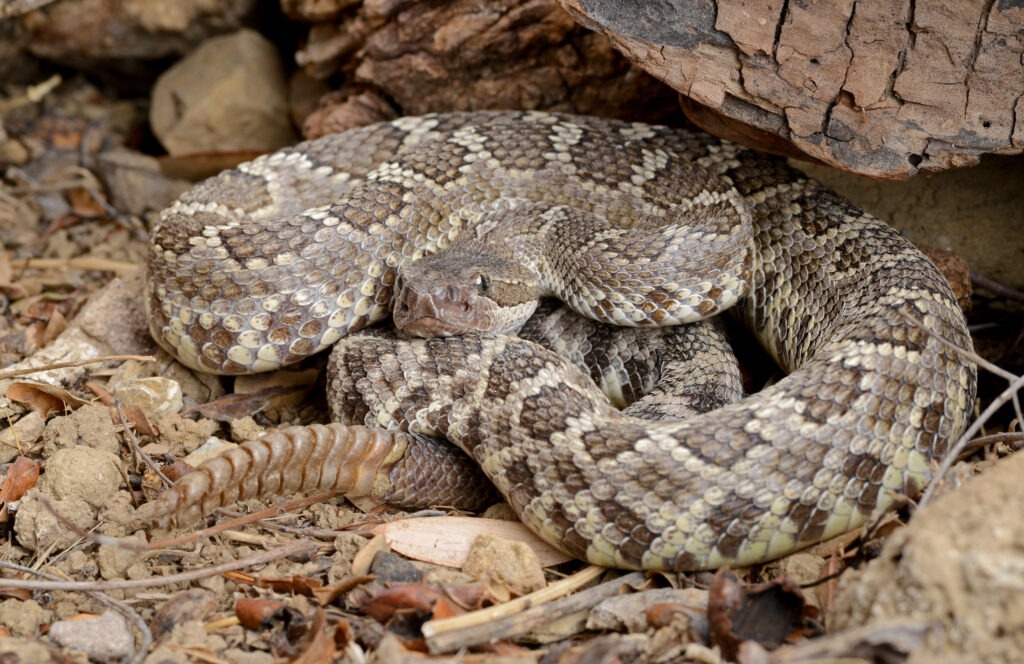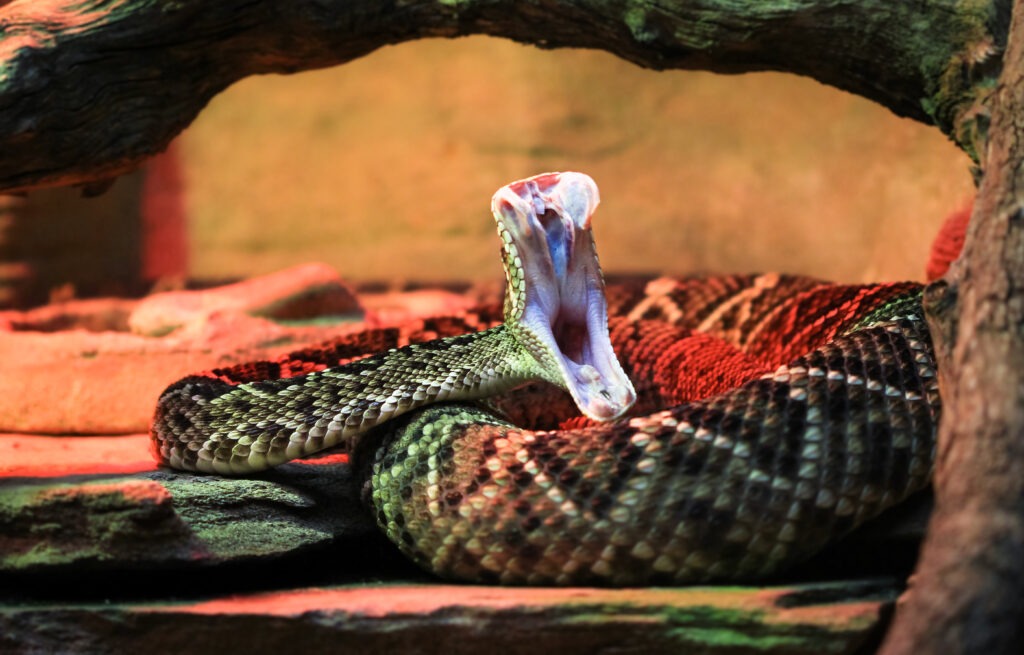
Rumor has it that venomous snakes, like rattlesnakes, breed with non-venomous snakes to create the ultimate hybrid species. But is this true? Can rattlesnakes breed with other snakes?
Here’s what I’ve observed:
Rattlesnakes cannot breed with any other kind of snake, only other rattlesnakes. These, and most other breeds, can only make snake families with their own kind. However, different species of rattlesnake can mate with each other.
So, thankfully there are no such things as hybrid rattlers or secret venomous crossbreeds.
So you can take a deep breath in knowing that there are not monster hybrid snakes out there that are going to eat you.
Normal rattlesnakes are already enough to worry about! But aside from rattlesnakes, maybe you’re wondering if other snakes can breed with each other. Can venomous snakes breed with nonvenomous snakes?
Also, why can’t rattlesnakes breed with other snakes? Below are the answers to your questions!
How Snake Families Work
First of all, let’s talk about snake families. What is a snake family? A snake family is a classification or a scientific grouping that a given snake belongs to. “Family” is almost like saying species, except it is a bit broader.
In terms of specifics it goes family (as the broadest) then genus, then species (as the most distinct).
There have been cases where snakes cross-breed. Almost all the recorded cases are from snakes kept in captivity, though there are rare cases where snakes have mixed company in the wild. (Probably only by accident).
Something important to note though: snakes do not and cannot breed and/or mate with snakes from a different “family”. They usually stick to what they know, and what they know is their own makeup.
Below is a chart to help clarify who is who:
| Family Classification | Qualities | Well-Known Snakes | Locales | |
| *Viperidae | venomous | hinged-fangs, short/stocky build, and triangle-shaped heads | Rattlesnake, Pit Viper, Puff Adder, Cottonmouth | Everywhere but Antarctica, Australia, and Madagascar |
| *Elapidae | venomous | hollow fangs, long/skinny look, and neck-flaps | King Cobra, Mamba, Coral Snake | Tropical/ subtropical regions |
| Colubridae | nonvenomous | flat teeth, loose facial structure, and lack of head scales | Rat Snake, Gopher Snake, Corn Snake | Every continent except Antarctica |
| Pythonidae | nonvenomous | long and large bodies, crushing/squeezing prey, and lax jaw muscles | Green Tree Python, Burmese Python | Africa, Asia, and Australia |
| *Boidae | nonvenomous | long and large bodies, crushing/squeezing prey, no teeth | Boa Constrictor and Anaconda | The Americas, Europe, Asia, South Pacific |
So, for example, a Rat Snake could potentially breed with a Gopher or Corn Snake, but a Corn Snake could not breed with a Boa.
The DNA of the two are very different, making it hard for snakes to breed with snakes outside their family.
With the example of the Corn Snake and the Boa, boas are used to live births whereas Corn Snakes are not. That fact alone, not to mention the near impossibility of crossing paths, could cause some issues.
Rattlesnake Breeding Conditions
For breeding to happen between snakes in the same classification, there are a few ground rules:
- Snakes have to live in the same neighborhood (when in captivity, that translates to climate)
- They must be *active at the same time of year
- Have the same mating cues (no mixed signals here)
- Genetically similar (same family)
(*Activity of snakes relies on the weather. Though snakes are said to hibernate, they actually do something a bit milder called “brumation”.
During this time (winter/ cold temperatures), snakes will move very little, slowing down their metabolism to save energy and retain warmth.)
Some exceptions to this rule are Coral Snakes and Rattlesnakes.
Though most snakes can pretty easily breed between the lines, these two species of snake are especially picky. Rattlesnakes have only been known to mate within their own kind, and Coral Snakes too.
The only recorded “cross-breeds” of these are South Pacific Rattlesnakes breeding with Mojave Rattlesnakes. Nothing beyond that has been documented.

Because of brumation, most snake species will be ready to breed in the early Spring, and they will give birth during the hotter months. (For tropical snakes, breeding can happen year-round).
This also makes it almost impossible for snakes to cross-breed, as they do not all breed at the same time of year and some require very specific climate requirements.
Rattlesnake Hybrids + Crossbreeds
Other snakes aren’t so selective. There have been times, both in the wild and in captivity, where varied species have come together to create a new kind of snake.
Some reported hybrids include:
- Bull Snakes + Fox Snakes
- King Snakes + Corn Snakes
- Great Plains Rat Snake + Corn Snake = Creamsicle Corn
- California King Snake + Corn Snake = Jungle Corn
- Ball Python + Blood Python = Super Ball Python
- Burmese Pythons + Indian Pythons
- Garter Snakes + ? (there are over 30 different varieties of Garter Snakes)
- Copperheads + Cottonmouths/ Water Moccasins = “Coppermouths” or “Cottonheads”
Apparently, Corn Snakes are pretty indiscriminate! At least half of these variants have been found in the wild, though most interbreeding happens in captivity under controlled circumstances and careful watch.

Breeding in captivity for snakes is becoming more and more common.
Although there are a lot of factors that go into breeding snakes in captivity, many take on the challenge because certain conditions can be produced that allow different species to be able to breed. (source)
Does Venomous and Nonvenomous Snake Breeding Occur?
So, given all this information on snakes and breeding, can venomous species breed with nonvenomous species?
In short, no. They cannot.
Going back to the snake family chart, snakes with venom and snakes without venom are from different classifications, from different families.
Because that is true, the two kinds of snakes simply cannot interbreed.
But why not? For one, nonvenomous snakes can be bigger than venomous snakes. (The average viper length is 20 inches and the average boa length is 8 feet). The measurements just don’t line up.
Aside from that, there are different climates between snakes and different standards of living to take into account. Sure, almost every snake is up for socializing in the spring, but that doesn’t mean that a python would look twice at a king cobra.
Even Boas and Pythons who are very similar in makeup would never consider each other as potential mates.
